Hello!
You’ve received this email because you’ve signed up for noodsletter. Thank you.
If any of you want to send over things you find interesting, or that you think I would find interesting, I encourage you to do so! (Thank you to all who do!)
Today, we’re talking anchovies: Boiling them, drying them, sticking them in a soup. And an idea for tomatoes.
All the recipes ever published in noodsletter have been archived in the very first noodsletter, which you can find here.
Please consider becoming a paid subscriber!
Book Bit
“Do sit down,” Pat said.
We had soup, then poached salmon and potatoes and brussels sprouts. There was a green salad in a bowl that went untouched. Pat was too frazzled and anxious to meet the implacable demands of a kitchen, too unconfident to juggle cookbooks. An insecure person is lost in front of a stove. Cooking requires confident guesswork and improvisation—experimentation and substitution, dealing with failure and uncertainty in a creative way. And Vidia was a challenge: a vegetarian food snob who could not cook and who never helped. He sat and was served.
“I want you to try some of this, Paul.”
He poured, I sipped.
“Hold it in your mouth. There—do you taste the almonds, the peaches? It’s a complex finish, oaken with a hint of chalk. Do you get it? Isn’t it delicious? It must be savored.”
From Sir Vidia’s Shadow: A Friendship Across Five Continents by Paul Theroux.
There’s an extended scene in this book in which Theroux pays for a dinner he cannot in any way afford, and it is the best description of that feeling I’ve ever read. Due to the odd combination of my proclivities and choice of profession, I’ve been in that position far too many times, and Theroux captures it perfectly.
Been Shoppin’
We went to a summer festival (natsu matsuri) at Japan Village at Industry City a couple weeks ago, and I just happened to pick up a watermelon being sold by a farm stand. The farm in question is Suzuki Farm, which is run by Japanese people and they only produce Japanese fruit and vegetables. The watermelon was perhaps the best watermelon I’ve ever eaten, so I ended up ordering an assortment of stuff from them online. The produce is exceptional; the crisp stuff seems to just fall apart when you start cutting into it, almost like it’s pre-cut (it’s super weird!). They apparently have a ton of turgor pressure—super crisp cucumbers, turnips, peppers.
They also included some sudachi! Never worked with it before. I made a sudachi zest/juice vinaigrette for some kyuri (Japanese cucumbers) and some French breafkast radishes from Willow Wisp farm…indescribably good.
We’ve decided we’re going to keep ordering from Suzuki for now, but it’s a little pricey (might even cancel a streaming service sub or two lol), so I’m not sure how regularly we’ll make orders. Just ordered something today, however!
My Niboshi and Me
I realize I’ve written before about turning the fresh anchovies you can buy from E-fish into niboshi, but only briefly, and in any case what is this space if not a place for me to describe odd cooking projects that no respectable online publication would ever consider publishing?
The issues with homemade niboshi are many, but they can be boiled down to: It’s a very smelly process; it isn’t entirely clear to me that it’s safe; and the market for niboshi is already very small, largely limited to people interested in cooking Korean and Japanese food—the market for homemade niboshi is infinitesimally small.
But I have done this four times, and I’ve got some thoughts about the process. If you’re at all interested in boiling and drying tiny fish, some of these thoughts may be useful to you.
First off, you need super fresh fish. It only ever occurred to me to do this because I bought anchovies on a whim from E-fish, fully intending to dredge them and fry them, but then found myself eating them in raw preparations. They were delicious, and, having survived, I had enough confidence to brave the treacherous waters of food poisoning-by-dried-fish. (Although I did, of course, fry some.)
If you want to reduce the drying time, and thus the amount of time your house/apartment/clothes/skin smell like drying anchovies, it’s best to use little fish. Unfortunately, I don’t think you can specify to your seller that you’d prefer anchovies about 2 inches long at a maximum, and this is a dilemma in part because big anchovies are great for eating (frying, filleting and sinking into a vinegary brine, etc.), but super annoying for drying in your Brooklyn apartment. You can be inflexible, as I was, and just dry huge anchovies as best as you can for hours upon hours, or you can just admit that whatever fish you receive might be better used in some other preparation and wait ‘til next time. The best part about niboshi? You don’t have to fillet the fish. Which is why even though I knew the drying the big fish would put undue stress on my marriage, I chose to make niboshi instead of filleting 70 tiny fish to eat raw.
The idea with niboshi of all kinds is you take little, flavorful fish, poach them, then dry them. This has to do with flavor development and food preservation. When you cook fresh fish to about 170 F, the amount of inosinic acid in their flesh is “locked in”1; if you don’t, that inosinic acid will degrade over time. This bit of food science is applied not just to the small boiled and dried fish that are niboshi; it’s also applied to yakiboshi, which are fish that are fried then dried, and katsuobushi, the dried skipjack tuna fillets that are the basis of Japanese cuisine.
Once cooked, the fish is dried. Now, the first time I did this, I made the mistake of thinking the fish needed to be salted. I don’t know why I thought this; I had researched drying fish etc., etc., and yet when I was standing in front of a big pot of water, about to slide a school of anchovy in, I decided the water had to be salted, for food safety, or for seasoning, or for both, I don’t know. And then as soon as the fish started cooking, I realized I was wrong. For whatever reason, salted water makes the fish more likely to break up while it’s poaching. It also makes the final dried fish unpleasantly salty (duh).
The reason you don’t want the fish to be cooked much higher than 170 degrees is because you want them whole; raise the temp higher, and they’re more likely to fall apart; get the water at a roiling boil and they’ll definitely start breaking up. Part of the alchemical transmutation that takes place after boiling and drying the fish is that the flesh is super dense; it will not flake up into tiny bits, which in turn makes it easier to make clear stocks. Keeping the fish whole, the flesh contained by the silvery blue skin, is consequently quite important.
They only need to cook through, so about 10-15 minutes is enough time in a 170 F pot; here, time is your enemy, as even at that low temperature the fish will start to break up if you let them go too long. (This last time, since the fish were so big, I overshot the mark a little, so I had to deal with big broken fish.)
At this point, I want to state a strong caveat: I do not know if this whole process is safe. I have not died yet, but that isn’t all that reassuring; it’s just anecdata. If you choose to do this, you are taking your health into your own hands. Everything I say about drying fish should be viewed skeptically. Anyway.
I have dried these fish outside, in the full sun, on a dry day, covered with cheesecloth to prevent flies from starting little fly colonies on them. And they were fine. I have dried these fish in a conventional oven, with the door cracked open with a wooden spoon, the temperature set as low as it can go (180 F). They were fine, too. I have also, more recently, dried them using the dehydrator function on my Breville Smart Oven Air Fryer. I used that little oven for this most recent batch of bigger anchovies. Of these methods, the dehydrator was the most reassuring, as it kept a constant temperature with ample airflow; had I used smaller anchovies, I would feel comfortable serving soup made with them to people who are not in my family. The other two methods, while effective, seemed to leave a little too much up to chance in terms of food safety?
That being said, the most recent batch was the least dry of all the batches I’ve done, since the fish were so big and because my wife understandably lost her patience with the fact that I’d been drying 4 lbs of anchovies for 12+ hours in the middle of summer.
The drying should take about 12 hours to completely desiccate the fish; big fish will probably not be totally dry. However, given my uncertainty about the food safety here, I froze every single batch of dried fish as soon as the process was complete.
As to flavor—the question of “why” someone would do any of this is a fair one. It’s a stinky process; the product is expensive (fresh anchovies are hard to come by, and they need to be top quality!); and the dried fish have relatively limited uses. I tried the process because I was curious, and I’ve repeated it because I continue to be curious about it and I find it fun to touch and manipulate seafood of all kinds. Ultimately, however, I’ve repeated the process because these fish taste really freaking good. The soup and oils I’ve made with them have been some of the tastiest I’ve made. Whether that’s objectively true or subjectively colored by the fact that I boiled and then dried these little fish myself—who cares? I’m certain, however, that if it tasted bad, I wouldn’t do it again.
Case in point, this shio ramen, which is the best bowl of ramen I’ve ever made. I’m not even a big shio ramen guy, but the homemade-niboshi/pork/chicken stock was incredible.
Tomatoes & Katsuobushi
I know I said right at the beginning of noodsletter that I would never apologize for anything humdrum-newsletter related, but I have to apologize for the silence on my part this past month. Simply put, I have been busy. I had all these ideas for tomato stuff for you all, but now tomato season is basically over and fall’s about to begin. I’ll try to be a bit more timely about recipe inspiration (it’s chicory season, baby! Get ready!), but for now, here was the one good idea I came up with for when peak tomatoes get boring. It’ll work with store-bought cherry tomatoes, too, of course.
Cut the cherry tomatoes in half, spread ‘em out. Drizzle with sherry vinegar and good live oil, season lightly with salt, top with a light dusting of katsuobushi, very light drizzle of soy sauce.
“News”
Tammie says burrata is boring, nicely. I agree, meanly: burrata is boring!
Invasive blue crabs are destroying Italian clam aquaculture. However, doesn’t it seem like there could be an easy fix for this? Italians could do wonderful things with blue crabs. Maybe they could even do something with soft shell crabs that will justify the hype around soft shell crabs.
The unique species of crab in Rome’s “Cloaca Maximus.” Is the Scientific American blog always written in this way? I love it. (I looked into it after writing this, and the author, Rob Dunn, has not written for Scientific American since 2017, but he was recently behind this sourdough project.)
87-year-old fends off home intruder, offers snacks to distract him
(A terrifying story, that one, even if the headline is slightly funny.)
I try to be positive and highlight only good things, but this is an egregious piece of product placement for a pizza oven masquerading as an interview of a high-profile, well-known chef. Baffling that Eater ran this, baffling that Bettina Makalintal put her name on this, baffling all around. (And I say this as someone who wrote the phrase “dried them using the dehydrator function on my Breville Smart Oven Air Fryer” while being employed by Breville!)
Paris Review restaurant reviews raise a lot of questions for me. A looooot of questions.
It is pure insanity that “farm-to-table” cosplaying led to frozen peas, OF ALL THINGS, going out of fashion in the United Kingdom. They literally eat pea mush all the time, and frozen peas are undoubtedly the tastiest place to start out making pea mush since they’re frozen at peak freshness!!!
Nice review of a food/performance art/theater thing.
Twitter’s still good for some random things, even though it’s devolved into the lowest-common-denominator social media site:
“Sardinecore.” Okay.
I was just browsing the internet the other day and decided to look up Max Falkowitz to see what he’s been doing, and it turns out one of my favorite food writers from way back in the day has turned his considerable talent toward writing about bonsai trees in his free time. Like his food writing, this stuff makes me want to bonsai!
The corporate apiary installation feel good-ism has to stop!
Fuchsia Dunlop has a new book out.
Confused about the parallel tracks of “we must vet the character of chefs and be on the lookout for abusive monsters,” as illustrated by all the hand-wringing and drama surrounding the James Beard Awards EVERY YEAR, and Chef’s Table at Brooklyn Fare being this widely lauded restaurant despite the fact that the chef there was confirmed to be an abusive manager/boss years and years ago. Is his food really that good? Even people like Pete Wells seem smitten.
(I remember liking the Harper’s send-up of Chef’s Table, but I also remember it getting dragged online because the writer was icked out by homeless people. Two things can be true at the same time!)
Speaking of, April Bloomfield is making a comeback, with Gabe Stulman no less. This is another example of bad chef behavior just being ignored by food media. If I’ve heard the stories about what happens in kitchens under Bloomfield’s watch, then surely more connected people who are, you know, actual “reporters” should have, too. And that would be the case even if her longtime partner wasn’t Ken Friedman! My point isn’t that these people shouldn’t get press (maybe they shouldn’t?); my point is food media ties itself into knots on this issue and then just say “whatever” when they want to push out new restaurant content, which means bad chef behavior as an issue is just face-saving pabulum.
I don’t know what’s going on at Food & Wine, or if they’ve always been like this, but this is deeply embarrassing stuff about Japanese grilling (which, of course, starts off in a restaurant that serves satay.) These publications can get anyone in the world to write for them, but the expat who’s like “Japanese art of simplicity + grilling” is the guy who gets the gig.



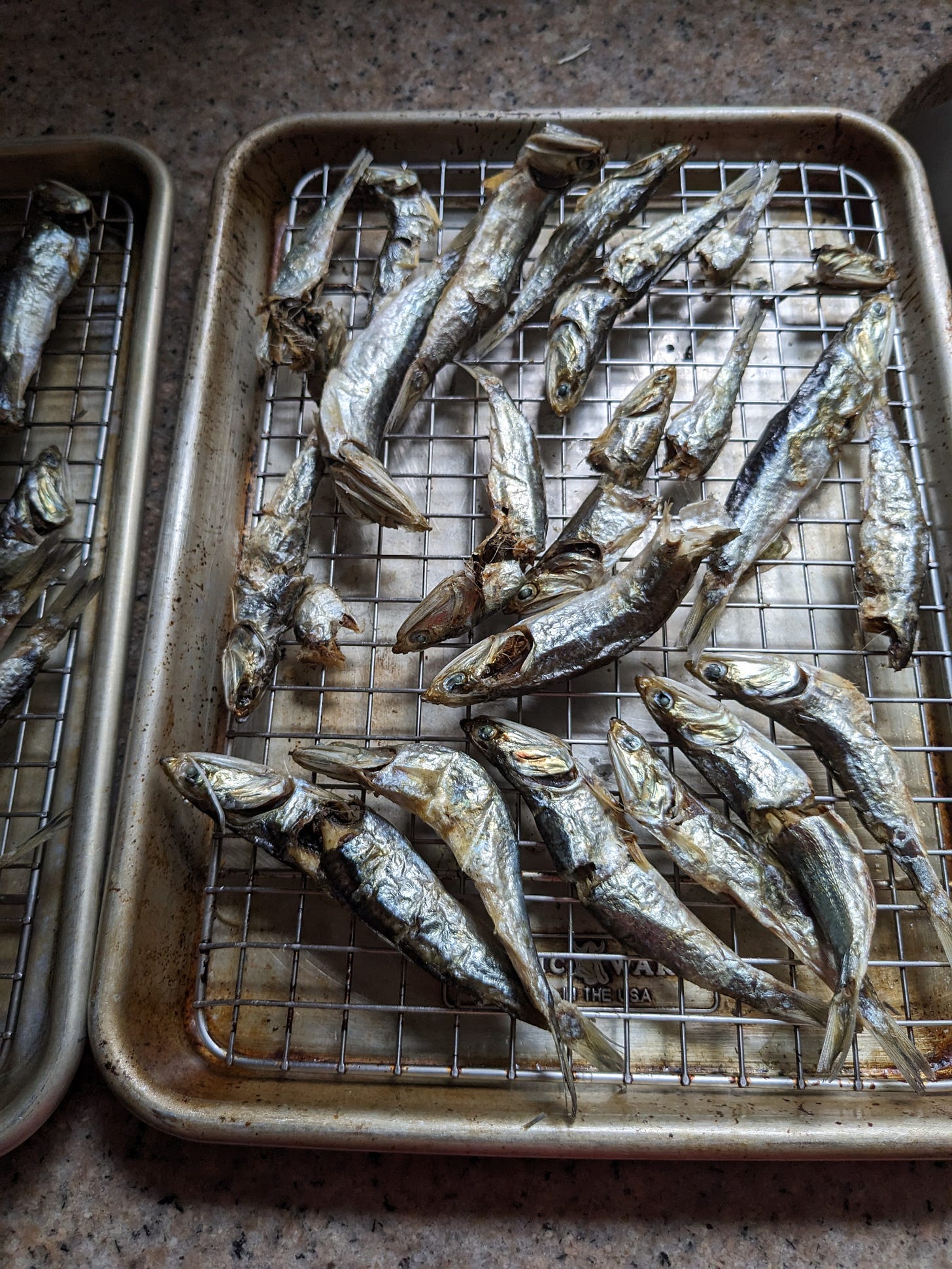

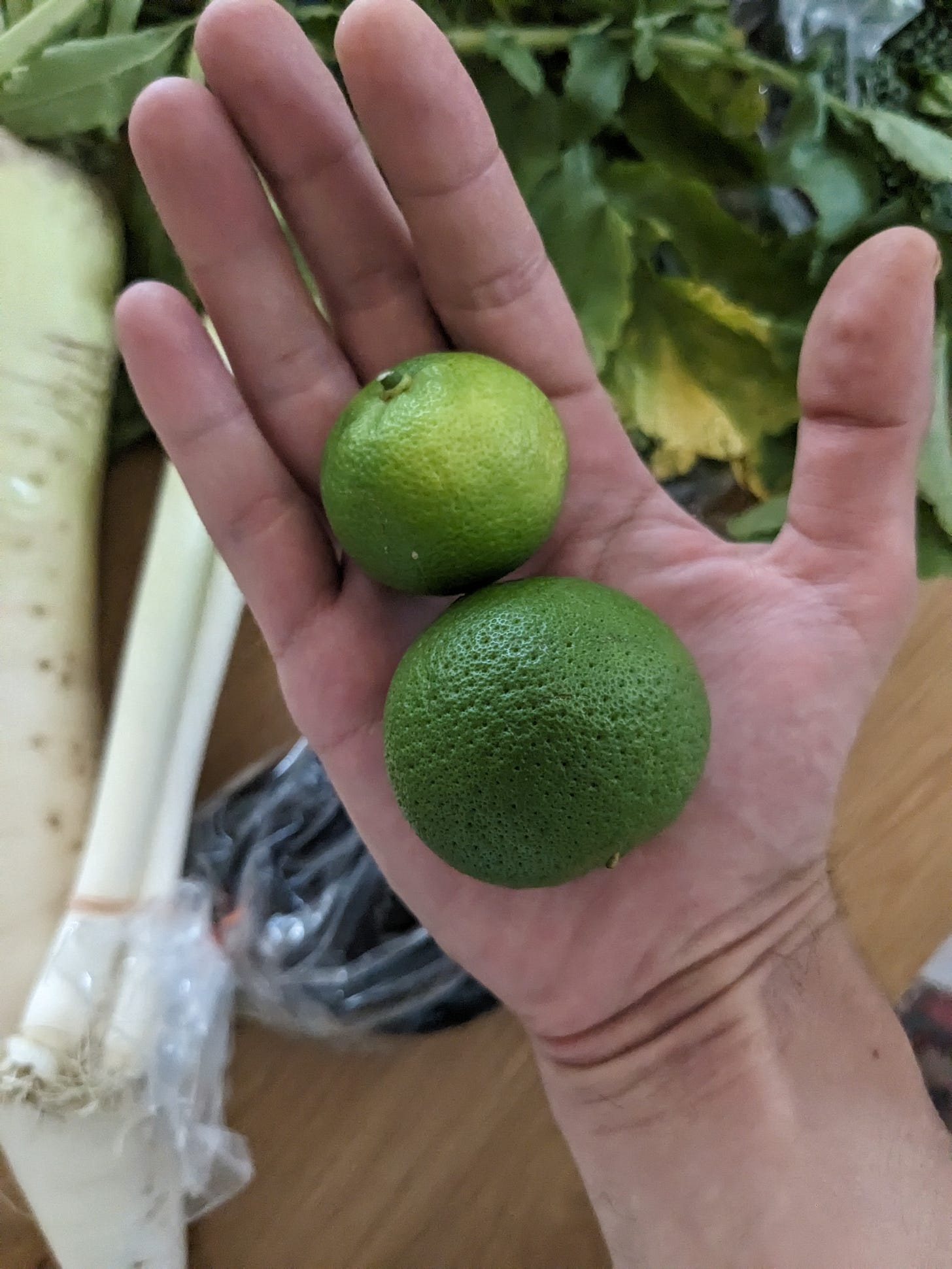
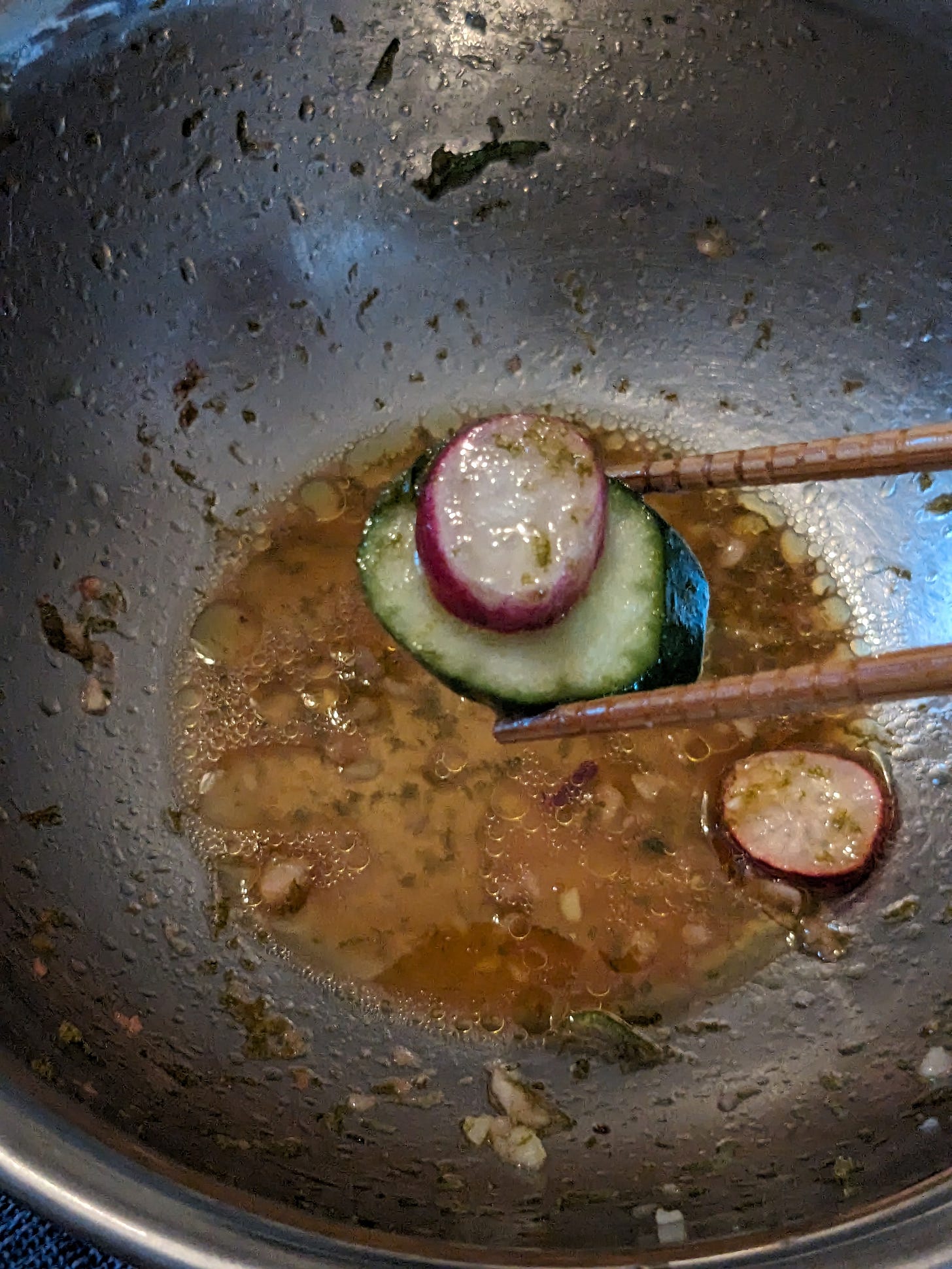
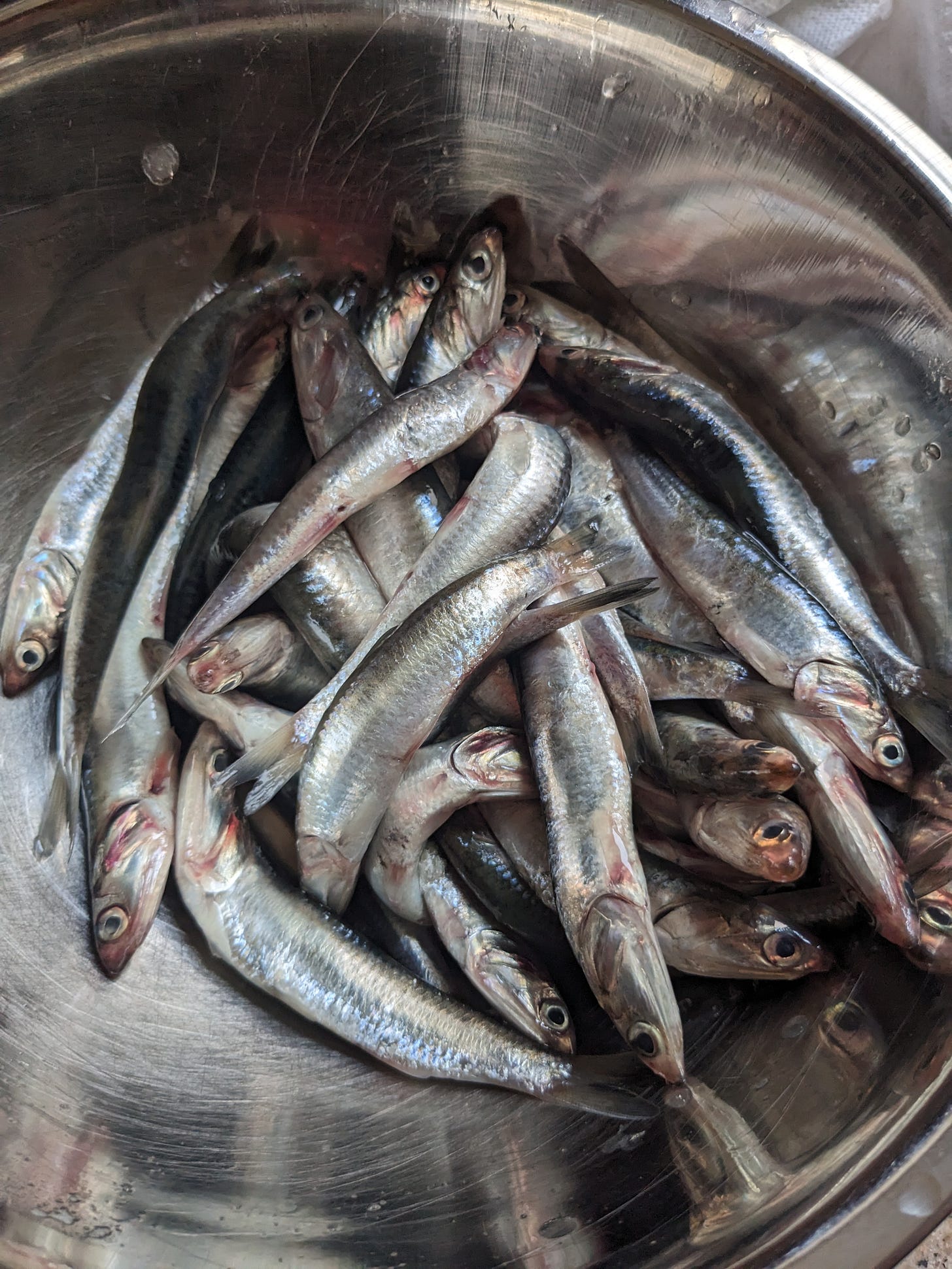
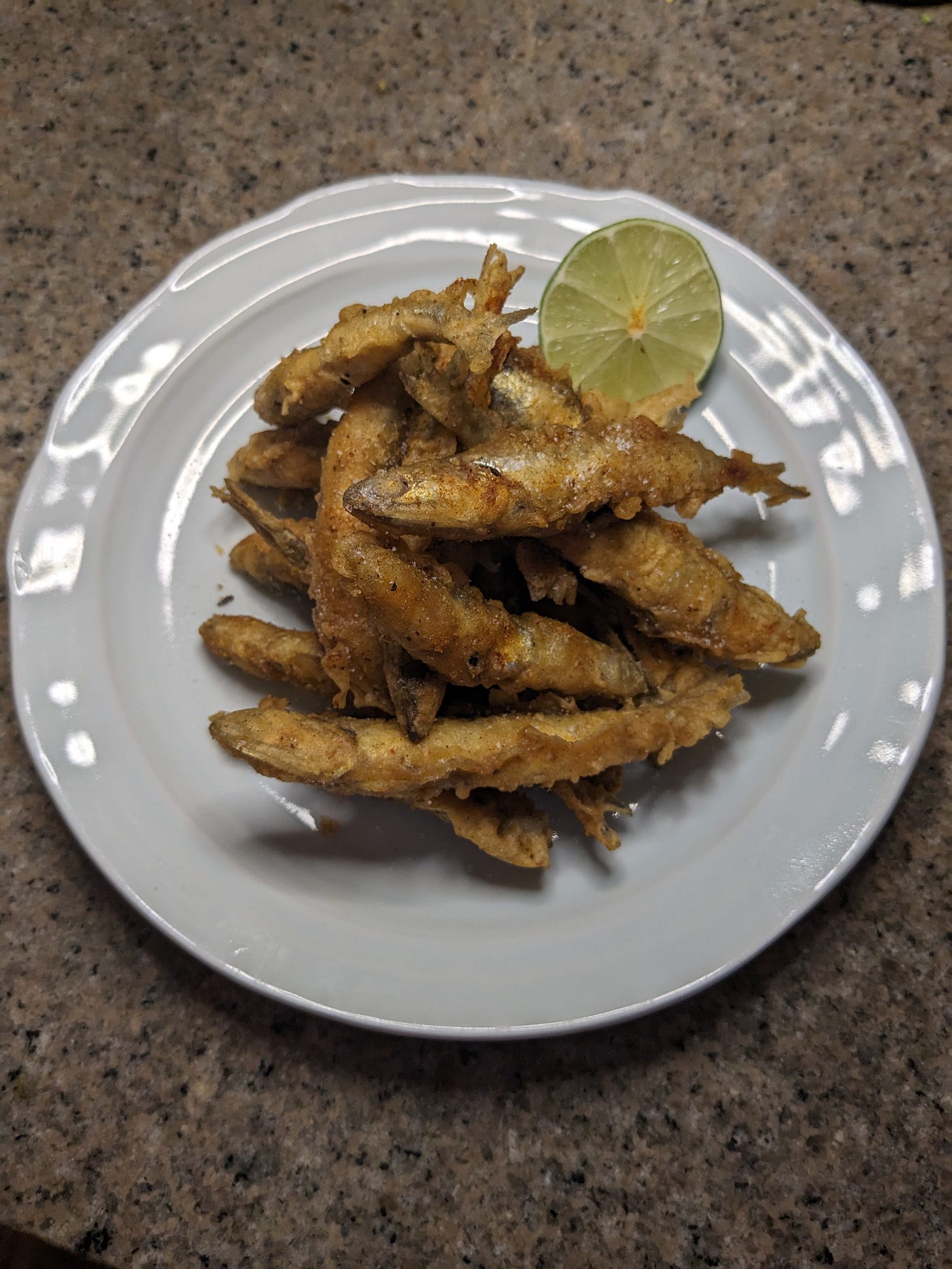
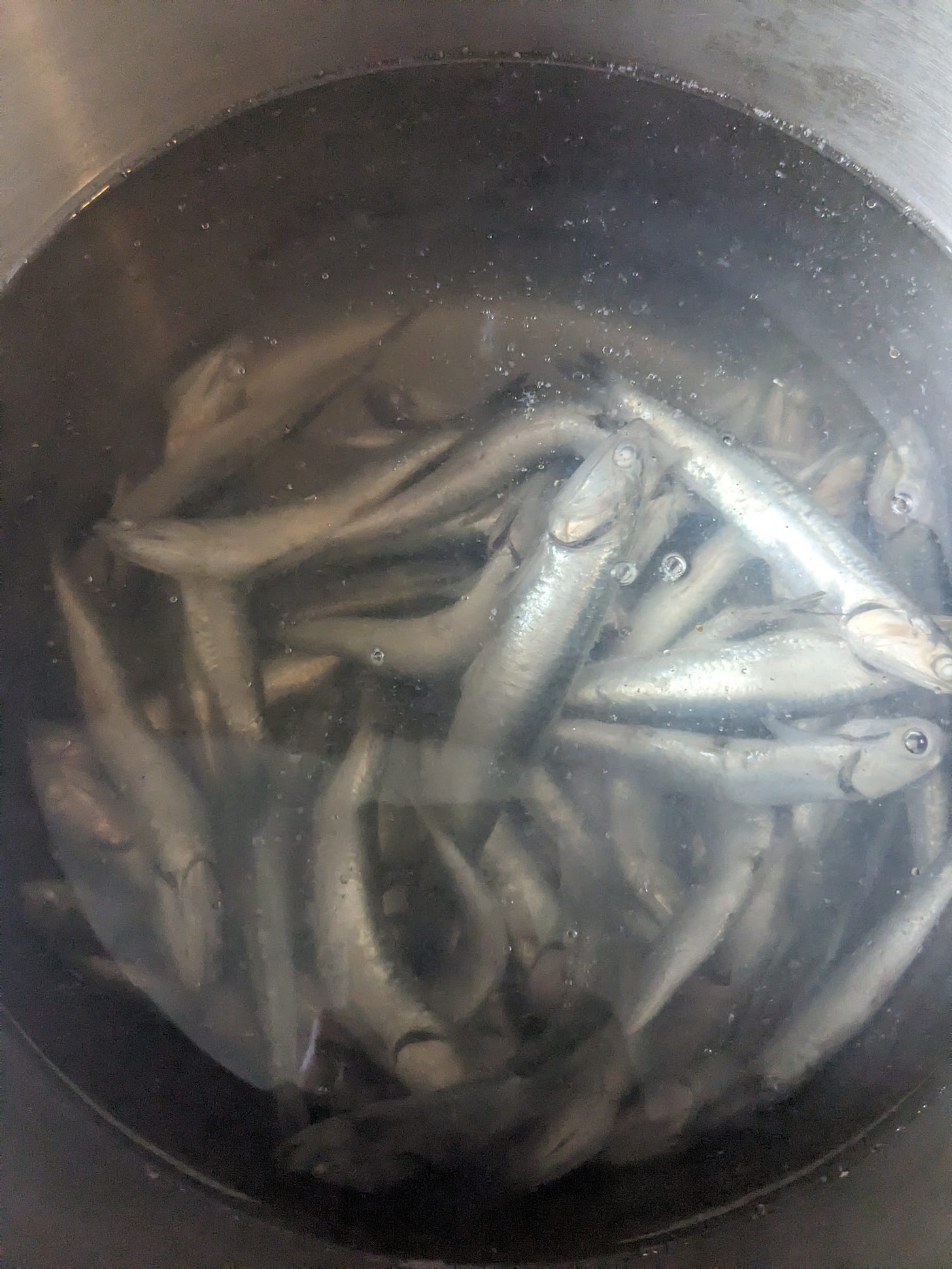


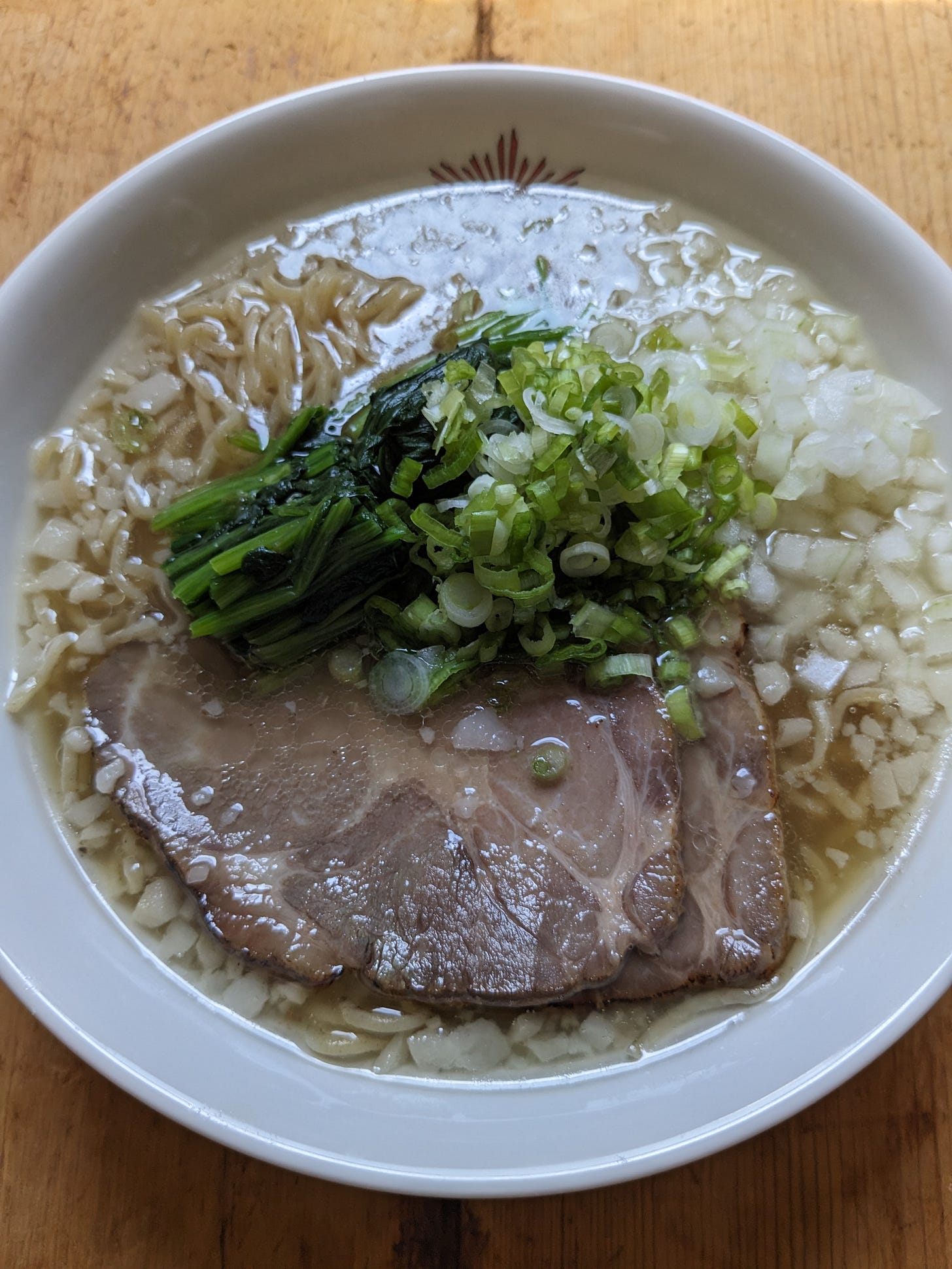


I liked a lot this last newsletter, Sho, particularly the niboshi bit.
I have been waiting for a chance to make niboshi since you shared your recipe a while ago, but it is a bit hard to find small fresh anchovies where I am.
Anyway, I was wondering what kind of food safety issue you are afraid of exactly? It may be another anecdote, but my father-in-law has been making experiments with dry fish for 30+ years without any problems.